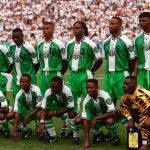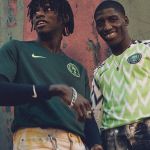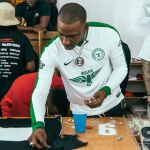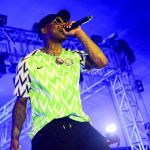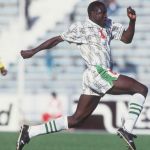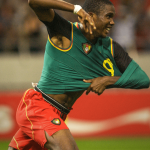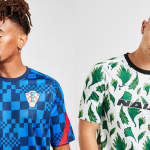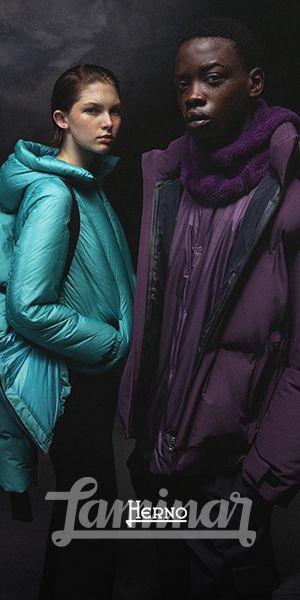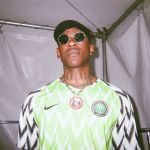
Football and streetwear: what's behind all the hype about Nigeria's jersey
Skepta, Nike, three milion of pre-orders: everything you need to know about the coolest shirt of 2018
May 29th, 2018
On 7th February, Nike unveiled the Nigeria kit for Russia 2018. For the first time since the 2002 World Cup co-hosted by Japan and South Korea, the Swoosh has returned to hold a task as technical sponsor of the Super Eagles National team at a World Cup final stage after the previous tournaments adidas-branded. Three months later, and even before the offering for sale, the home kit has received over three million orders for a potential $255 million in revenue. Neither Manchester United, industry leaders in short sales, did better – their best was in 2016, when they sold 2.8m. The success is not just in numbers, Nike seems to have perfectly captured the crossover between football, fashion and streetwear that is dominating the contemporary aesthetic.
Between Tradition and Streetwear
Firstly, to figure out the immediate achievement of the jersey – not only among Nigerian fans, but widespread between all football and sportswear fans – it is necessary to look at the design and its high rate of swag style. It takes inspiration from the USA ’94 away jersey, a classic World Cup kit of the Nigerian national team, reconsidered in an innovative way as showed by black and white decorations on the sleeves.
Everything else is a hymn to the streetwear fashion: a pattern so unique that it has already made the uniform the coolest and most fashionable of 2018 according majority of magazines and fashion outlets.
It is characterized by white-green stylistic forms that recall the eagle's feathers on the crest, as well as a symbol of the Nigerian Football Federation (NFF), giving the shirt that wavy, dynamic and almost electric fantasy that has made it admired at every latitude. The home kit seems to explore futurist universes while remaining faithful to the tradition and pride of Nigerian traditional colors. The green remains the protagonist – although this time it is more the distinctive feature of the away kit – while the badge is a clear reference to the successes of the Atlanta ’96 Dream.
“Audacious. Fast. Fun. Stylish” - The new Nigeria
But beyond the purely aesthetic properties of the shirt, at the base of its success is the meaning it represents and the message it wants to convey. The uniform belongs to a Nike off-pitch collection called "For Naija", a term used to identify the new Nigerian generation, exuberant and full of perspective, composed of young people who look to their land with patriotism and a spirit of revenge. The two syllables entered the common language from 2010, to celebrate the 50th anniversary of independence, an expression of optimism that hovers around a new narration of the country, far from the problems of malfeasance and corruption of the past and seeking out a future full of optimism.
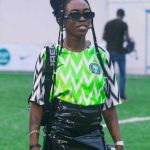
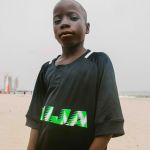
The new Nigeria is made up of boys and girls born or grown in Europe, some of which are probably unable to know the hymn by heart and perhaps even unaware of their background before taking part in the most important football event. The narrative around Nigeria is different from any other African national team, still anchored to the myth of African football and with the complex of European football. This change of perspective was proved by the launch of the game kit, which no longer happened in Nigeria as it was in 2014 with adidas, employing semi-unknown football players to the European public as a model. London was chosen as the location and Wilfred Ndidi, Jon Obi Mikel, Alex Iwobi and Kelechi Iheanacho - all names with a past or present in the Premier League teams - were the first to admire the jersey they will wear in Russia. Their reaction («Wow, it's nice, it's cultural, this is Nigeria») is symptomatic of the charisma and the hype that ooze from a home kit designed to meet the needs of young people accustomed to European culture and lifestyles. They have become the target to address as an expression of that vitality and exuberance of a country that is churning out some of the most promising talents as never seen before, so much that Nike defined the team "Audacious. Fast. Fun. Stylish ".

Also the restyling of those colors that traditionally characterized and made famous the team uniform – in the past entirely green with white decorations on the sleeves, collar and shorts – are indicators of a new and eclectic perception, perhaps less harmonious than the jerseys and the simple football played in the past, but perfectly in symbiosis with the new and irrepressible generation. While not denying its origins and the importance of street football as a first playful approach to the game, with sandbags, unlikely goal posts and barefoot games, the current youth seems to have overtaken this step, coming to shape themselves directly in the ranks of the big European clubs. The stories of Alex Iwobi and Obafemi Martins, symbols of the old and current Nigeria, are explanatory of this trend: the first one has arrived as a childish in England, even before kicking a ball; the second one, instead, was discovered while playing in the streets of Ljebu-Ode with the local team and subsequently brought to Italy.
Skepta, Naomi and the influence of African fashion
But in addition to the different paths of the new Nigerian players, the home kit also reflects a change of perspective in the way of conceiving a football shirt, transcending the simple concept of sports kit to the point of becoming a fashion object that is able to embody values and cultures. The merit, in this case, lies in the floral fantasy and Ankara-chevrons borrowed from streetwear fashion and translated into the off-pitch collection of "For Naija". These are patterns entered in the Western collective imagination thanks to the advent of African-oriented headdresses, far away from big mama shirts and hats, which have become a must-have on an international setting. Nike was also able to involve in the project personalities and companies related to culture, from the Nollywood film production company to the Afrobeat music, as well as the clubbing scene. During the last Homecoming’s edition, a kermesse held in Laos last April, rapper Skepta performed wearing Nigeria’s shirt.
Nike took advantage of the opportunity to launch the uniform, one of the many objectives within an event sponsored by the American giant aimed at the cultural exchange between brands and international artists and then donate the proceeds to charity. Skepta is not the only testimonial of what seems to have become a new fashion in dressing inside the hip-hop environment. Together with Skepta, there are Tinie Tempah and Big Smoke, the latest expression of the extra-football power of a shirt with such an iconic and sophisticated design that, in its own way, has already shaken-up the relationship between football and style like few others did before now.







